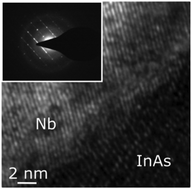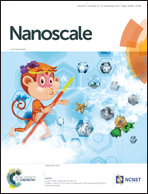MBE growth of Al/InAs and Nb/InAs superconducting hybrid nanowire structures†
Abstract
We report the in situ growth of crystalline aluminum (Al) and niobium (Nb) shells on indium arsenide (InAs) nanowires. The nanowires are grown on Si(111) substrates by molecular beam epitaxy (MBE) without foreign catalysts in the vapor–solid (VS) mode. The metal shells are deposited by electron-beam evaporation in a metal MBE. High quality superconductor/semiconductor (SC/SM) hybrid structures such as Al/InAs and Nb/InAs are of interest for ongoing research in the fields of gateable Josephson junctions and quantum information related research. Systematic investigations of the deposition parameters suitable for metal shell growth are conducted. In the case of Al, the substrate temperature, the growth rate and the shell thickness are considered. The substrate temperature as well as the angle of the impinging deposition flux are explored for Nb shells. The core–shell hybrid structures are characterized by electron microscopy and X-ray spectroscopy. Our results show that the substrate temperature is a crucial parameter in enabling the deposition of smooth Al layers. Contrarily, Nb films are less dependent on substrate temperature but are strongly affected by the deposition angle. At a temperature of 200 °C Nb reacts with InAs, dissolving the nanowire crystal. Our investigations result in smooth metal shells exhibiting an impurity and defect free, crystalline SC/InAs interface. Additionally, we find that the SC crystal structure is not affected by stacking faults present in the InAs nanowires.



 Please wait while we load your content...
Please wait while we load your content...